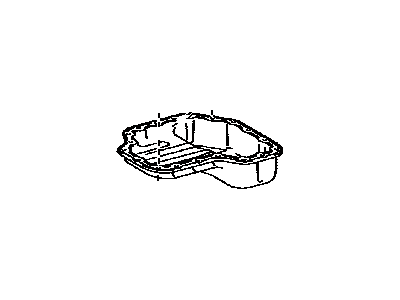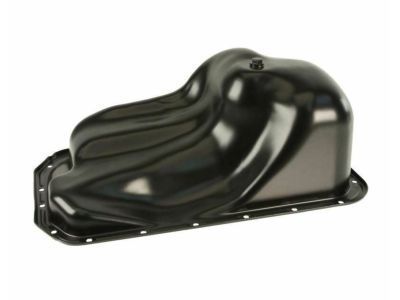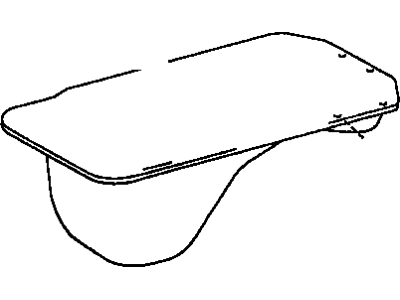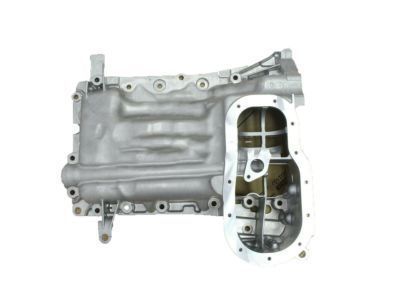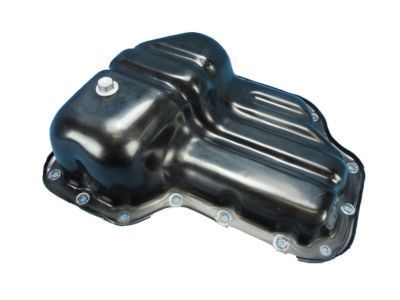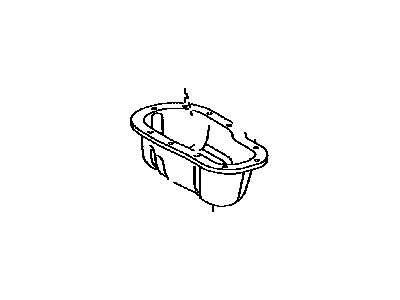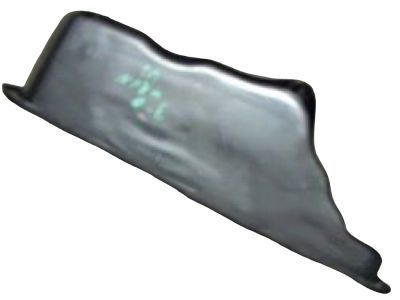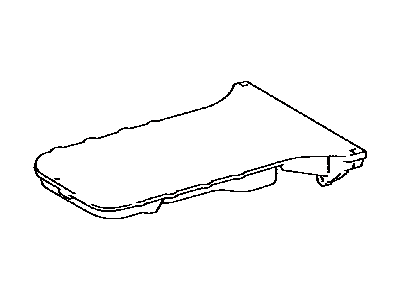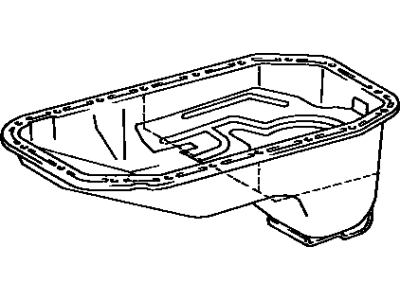

My Garage
My Account
Cart
Genuine Toyota 4Runner Oil Pan
Oil Drain Pan- Select Vehicle by Model
- Select Vehicle by VIN
Select Vehicle by Model
orMake
Model
Year
Select Vehicle by VIN
For the most accurate results, select vehicle by your VIN (Vehicle Identification Number).
23 Oil Pans found
Toyota 4Runner Oil Pan Sub-Assembly
Part Number: 12102-31010$71.97 MSRP: $101.44You Save: $29.47 (30%)Ships in 1-2 Business DaysToyota 4Runner Oil Pan Sub-Assembly
Part Number: 12101-62070$176.89 MSRP: $253.65You Save: $76.76 (31%)Ships in 1-2 Business DaysToyota 4Runner Oil Pan Sub-Assembly
Part Number: 12101-75050$166.71 MSRP: $237.01You Save: $70.30 (30%)Ships in 1-3 Business DaysToyota 4Runner Oil Pan Sub-Assembly
Part Number: 12101-31071$255.30 MSRP: $366.09You Save: $110.79 (31%)Ships in 1-3 Business DaysToyota 4Runner Oil Pan Sub-Assembly
Part Number: 12102-50130$105.36 MSRP: $148.53You Save: $43.17 (30%)Ships in 1-3 Business DaysToyota 4Runner Oil Pan Sub-Assembly
Part Number: 12102-75021$120.03 MSRP: $170.64You Save: $50.61 (30%)Ships in 1-2 Business DaysToyota 4Runner Oil Pan Sub-Assembly
Part Number: 12101-65011$166.71 MSRP: $237.01You Save: $70.30 (30%)Ships in 1-3 Business DaysToyota 4Runner Pan Sub-Assembly, Oil, N
Part Number: 12101-31160$345.42 MSRP: $515.29You Save: $169.87 (33%)Ships in 1-3 Business DaysToyota 4Runner Oil Pan Sub-Assembly
Part Number: 12101-75140$146.82 MSRP: $208.74You Save: $61.92 (30%)Ships in 1-3 Business DaysToyota 4Runner Oil Pan Sub-Assembly
Part Number: 12101-31070$255.30 MSRP: $366.09You Save: $110.79 (31%)Ships in 1-3 Business DaysToyota 4Runner Oil Pan Sub-Assembly
Part Number: 12101-59105$139.92 MSRP: $200.97You Save: $61.05 (31%)Ships in 1-3 Business DaysToyota 4Runner Oil Pan Sub-Assembly
Part Number: 12101-65020$162.50 MSRP: $231.02You Save: $68.52 (30%)Ships in 1-3 Business DaysToyota 4Runner Oil Pan Sub-Assembly
Part Number: 12101-59165$121.25 MSRP: $174.15You Save: $52.90 (31%)Ships in 1-3 Business DaysToyota 4Runner Oil Pan Sub-Assembly
Part Number: 12101-54041$109.92 MSRP: $156.55You Save: $46.63 (30%)Ships in 1-3 Business DaysToyota 4Runner Oil Pan Sub-Assembly
Part Number: 12101-35030$137.00 MSRP: $194.76You Save: $57.76 (30%)Ships in 1-3 Business DaysToyota 4Runner Oil Pan Sub-Assembly
Part Number: 12101-65010$166.71 MSRP: $237.01You Save: $70.30 (30%)Ships in 1-3 Business Days
| Page 1 of 2 |Next >
1-20 of 23 Results
Toyota 4Runner Oil Pan
If you are in demand for superior quality and affordable OEM Toyota 4Runner Oil Pan, then shop with us! We own a wide range of the reduced-priced genuine Toyota 4Runner Oil Pan. You can purchase in confidence as all parts come with a manufacturer's warranty. Any issues with our products? No need to worry as we have a hassle-free return policy to guide you every step of the way.
Toyota 4Runner Oil Pan Parts Questions & Experts Answers
- Q: How to remove and install the oil pan in V6 engine on 2003 through 2009 Toyota 4Runner?A:On 4WD models, it will be necessary to either remove the front axle/differential assembly or remove the engine from the vehicle in order to remove the oil pan. Begin by disconnecting the cable from the negative terminal of the battery. Raise the front of the vehicle and place it securely on jackstands, ensuring that models equipped with rear height control suspension are adjusted to NORMAL mode and turned off before raising. Drain the engine oil and remove the splash shield from underneath the engine. Remove the bolts and nuts securing oil pan No. 2 to the larger cast aluminum oil pan, which may be stuck due to RTV sealant; tap it loose with a rubber-tipped mallet or carefully cut the sealant with a putty knife and hammer without damaging the mating surfaces. Next, remove the two oil pump pickup tube/strainer mounting nuts and the pickup/strainer assembly, followed by the four bolts attaching the flywheel housing cover. Remove the 17 bolts and 2 nuts securing the oil pan to the engine block, along with the 4 stud bolts, and carefully pry the oil pan loose from the engine block, taking care to only pry in the small cutout areas along the side of the pan. For installation, use a scraper to remove all traces of old sealant from the block and oil pan, and clean the mating surfaces with brake system cleaner. Ensure the threaded holes in the block are clean and check the flange of the steel oil pan for distortion around the bolt holes, flattening it if necessary. Inspect the strainer for cracks or blockage, clean it with solvent, and install it using a new gasket, tightening the fasteners to the specified torque. Apply a 1/8 inch bead of RTV sealant to the upper oil pan flange, position the pan onto the block, and install the fasteners, tightening them to the specified torque in several steps. After installing the aluminum portion of the oil pan, apply a bead of RTV sealant to the flange of oil pan No. 2, position it on the upper oil pan, and install the bolts, tightening them to the specified torque in several steps. Finally, the remainder of installation is the reverse of removal; add oil and install a new filter, then run the engine and check for leaks.
Related Toyota 4Runner Parts
Browse by Year
2024 Oil Pan 2023 Oil Pan 2022 Oil Pan 2021 Oil Pan 2020 Oil Pan 2019 Oil Pan 2018 Oil Pan 2017 Oil Pan 2016 Oil Pan 2015 Oil Pan 2014 Oil Pan 2013 Oil Pan 2012 Oil Pan 2011 Oil Pan 2010 Oil Pan 2009 Oil Pan 2008 Oil Pan 2007 Oil Pan 2006 Oil Pan 2005 Oil Pan 2004 Oil Pan 2003 Oil Pan 2002 Oil Pan 2001 Oil Pan 2000 Oil Pan 1999 Oil Pan 1998 Oil Pan 1997 Oil Pan 1996 Oil Pan 1995 Oil Pan 1994 Oil Pan 1993 Oil Pan 1992 Oil Pan 1991 Oil Pan 1990 Oil Pan 1989 Oil Pan 1988 Oil Pan 1987 Oil Pan 1986 Oil Pan 1985 Oil Pan 1984 Oil Pan

